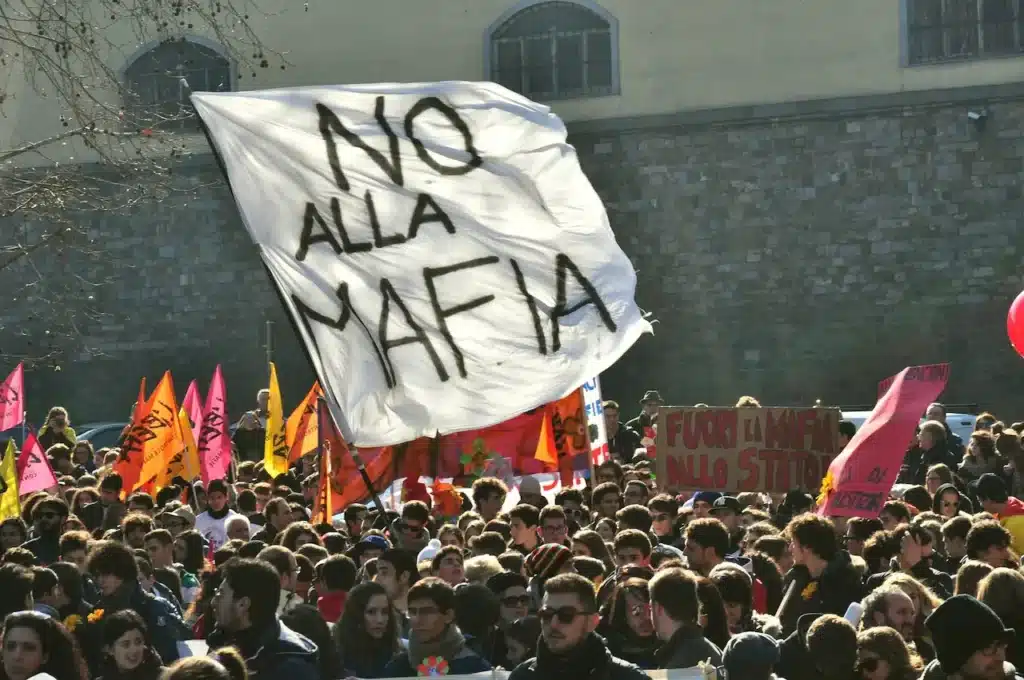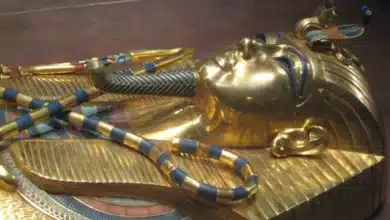How Does Mafia Works?
It has expanded its influence from the streets to the corridors, from drugs to politics. They operate outside the reach of law and yet are often feared – or even respected – in the communities they control. Mobsters are glamorised by Hollywood and law enforcement. They’re also stalked and feared by their rivals.
The Mafia is a family at its core. To join the Mafia means to commit yourself to secret codes, rituals and complex networks of loyalty. Betraying that trust can have brutal consequences. Many people who have turned on the Mafia paid the price with their lives.
In this article, we will explore how people join the Mafia, how Does Mafia Works, as well as how authorities have tried to take it down. We will also examine the key events and figures that have helped shape one of history’s notorious criminal societies.

Origins of the Early History of the Mafia
The majority of scholars agree that Sicily was the birthplace of the Mafia during the 19th Century, a time marked by political and social upheavals as Italy began its unification. Some historians believe that the roots of the Mafia go back even further, to the Middle Ages when Sicily was ruled by foreign rulers for centuries, including Saracens and Normans. According to this interpretation, the Mafia could have been formed as secret brotherhoods to protect local communities and resist foreign conquerors. These early groups could have combined elements from vigilante justice with local governance and a mistrust of outside power.
It is likely that the term “Mafia”, as we know it today, was born out of these turbulent centuries. Others claim it is derived from an Arabic-Sicilian word that means “protection”, “refuge”, or “defiance”. The Mafia was propelled to prominence by the chronic instability of Sicily, regardless of its etymology.
Sicily was plagued by lawlessness and poor governance in the 18th century. Private militias were hired by many absentee landowners who lived far away from their estates to protect their lands against bandits and rival groups. These militias are known locally as the Mafia. These local militias were initially used as protectors. Over time, these militias became more powerful and organised and turned against their employers. In exchange for “protection,” they demanded money from farmers and landowners alike.
Under successive foreign rulers in Sicily, the Mafia thrived and survived largely due to widespread mistrust of government institutions. The Mafia system of private justice was made more credible, even brutal, by the oppressive taxation, corrupt officials and distant bureaucracies. The system was governed strictly by omerta, which required absolute silence when dealing with the legal authorities. It was against the law to seek justice in court. Instead, injustices were resolved privately.
By the end of the 19th century, the Mafia, often organised into Families, had consolidated its influence in western Sicily. The Mafia families controlled local agriculture, trade and protection rackets as part of a loose confederation. They controlled lemon groves, which were a lucrative export during that time, livestock markets and municipal governments. By 1900, the Mafia was deeply entrenched within Sicilian society. It was a shadowy government that competed with the official authorities and laid the groundwork for its spread to other countries, including the United States.

Mafia Activities
Families engage in a wide range of activities that help them achieve their main goal, which is to make money. Extortion is one of the simplest and most common methods. It involves threatening people to get them to pay. The Mafia’s “protection rackets”, where shop owners have to pay weekly to avoid harm, are an example. Ironically, the people who are supposed to protect you are the ones who put you in danger.
The Mafia made money from many illegal activities over the years. These include bootlegging, drug trafficking and illegal gambling during Prohibition.
Leaders know that while petty crimes such as burglaries and muggings can bring in some revenue, larger operations will yield greater profits. They either hijack trucks to steal entire shipments or pay dock workers and truck drivers to “misplace valuable cargo” for resale. Stolen goods can range from clothing to electronics.
Infiltrating unions was one of the most infamous strategies used by the Mafia. Over the years, they were able to influence major construction projects throughout certain cities. They gained a share of profits by bribing and threatening union leaders. Sometimes, they even rose to positions of leadership. Once they were in charge, they could slow down or stop construction so that contractors and developers would pay. A large pension fund for unions was also available to them, which gave them even more power. The Mafia was so powerful that at its height, it threatened to stop construction and shipping in large parts of the country. Recent government crackdowns on organised crime have significantly weakened the connections.
It took many centuries for the current structure of the Mafia to be developed. Read on to learn about its history and how law enforcement has battled organised crime throughout the years.
American Mafia
The Mafia in America–often called La Cosa Nostra adopted an extremely rigid hierarchy, modelled on its Sicilian roots. This was designed to maximise profits and maintain order across their criminal enterprises. The boss ruled each family with absolute power and collected a percentage of all their earnings. The boss had power over every aspect of the crime family, including gambling and loan-sharking as well as drug trafficking and labour extortion.
The Underboss was directly below the boss. This second-in-command is often groomed to be the boss’s replacement. Underbosses were responsible for the day-to-day operation and served as a buffer to the boss from the lower ranks. This was especially true during times when law enforcement scrutiny was high.
The caporegimes and capos were next. Each captain commanded an army of 10-20 troops. These “made men” were officially inducted family members who performed the work of the family on the street, from running rackets and enforcing discipline. At the bottom of the structure were associates–criminals who worked with or for the family but were not official members. Associates can be from any ethnicity. They are often earners, specialists or experts in certain areas such as smuggling and financial fraud.
A key person in the hierarchy is the consigliere. This trusted advisor advised the boss and mediated disputes within the family. This was crucial to preventing unnecessary bloodshed and guaranteeing the survival of the organisation.

Rituals and Initiation
Becoming a Mafia member was a major milestone marked by an initiation ceremony laced with symbolism and secrecy. A candidate, almost always of Italian descent, had to prove loyalty and ability by killing someone on behalf of his family. This demonstrated trustworthiness as well as a willingness and ability to follow the rules of an organisation without question.
In the initiation ritual, the inductee is usually pricked on the finger to draw blood. This represents their bond with the family. Blood was then spread on a holy card, often depicting a patron saint. The card was set alight while the inductee recited an oath. The oath bound him to La Cosa Nostra forever: to obey all orders, to honour the code of silence, and to place the interests of his family before anything else.
Mafiosos were expected to follow a strict code once they had been inducted. Death was the punishment for betrayal or cooperating with authorities. The rules also prohibited harming another person without their permission, stealing money from their families, and having a personal relationship with the wife or girlfriend of another member. To preserve the power and integrity of the organisation, discipline was often enforced quickly, with brutality.
The Mafia’s tight-knit structure and ritual-bound organisation allowed it to survive intense law enforcement efforts, internal rivalries, and decades of intense competition. It created a world of insularity where secrecy and loyalty were key, and breaking rules was often punished.
How does the Government Take Down Mafia Organisations?
In the latter part of the 20th Century, the government started winning the war against the mafia. In 1970, Congress passed the Racketeer-Influenced and Corrupt Organisations (RICO Act, which was one of the most effective tools to bring down mobsters. It allowed the government to attack criminal enterprises in a broad manner, stripping them both of their leadership and of the sources of illicit and legitimate revenues in one mass prosecution.
In the 1980s & 1990s, RICO was used to convict mobsters who had previously avoided prosecution. Similar laws produced mass convictions during this period in Italy. In exchange for protection from their fellow Mafiosi and the threat of long prison terms, some Mafiosi chose to testify in favour of other mobsters. In the U.S., mafia membership declined, as well, due to demographic changes and increased assimilation of Italian-American neighbourhoods that were once a popular recruiting ground for mobsters.
The American Mafia had become a shadow of itself by the dawn of the 21st century. And the FBI began to cut resources dedicated to investigating organised crime. According to a journalist for the New York Times and an expert on organised crime, many of the crime families around the U.S. are in disarray, or even on the brink of extinction.
The Italian law enforcement agencies also continued to make progress in the fight against organised crime. The Mafia is still active in Italy and the United States. It continues to engage in its traditional activities such as loan-sharking, illegal gambling, and other forms of organised crime. The Mafia’s hold on the labour unions, and other industries like construction, has weakened, but not been eliminated. The fact that organised crime resources were diverted to counterterrorism after the terrorist attacks of September 11, 2001, on America may have contributed to the Mafia’s continued survival.




